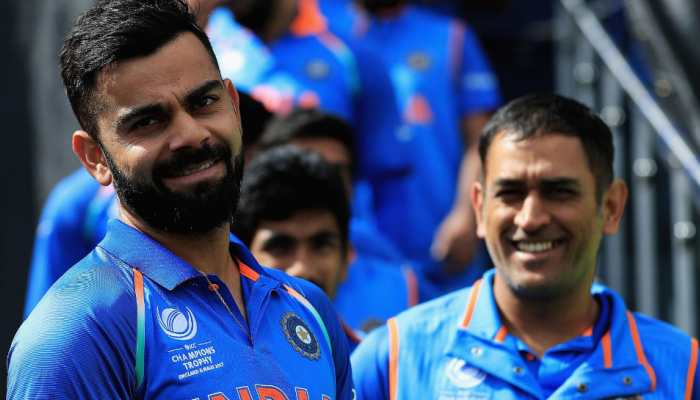Major Indian space discoveries/missions of 2015
Take a look at some of the major Indian space missions this year.
Trending Photos
)
Zee Media Bureau
Notwithstanding the success of its low-cost Mars Orbiter Mission (MOM), India’s maiden odyssey to Mars, the Indian Space Research Organisation (ISRO) has yet again made the country proud by successfully carrying out a sequence of launches this year, while positioning itself not only as a major player for space industries globally, but also as a leading foreign exchange earner for the country.
Take a look at some of the major Indian space missions this year:
Astrosat mission
India’s first dedicated multi wavelength space observatory ‘Astrosat’ was successfully launched into the orbit on board ISRO's Polar Satellite Launch Vehicle (PSLV-C30) on 28 September 2015, along with six foreign customer satellites. Read full story here: India successfully launches its first space observatory Astrosat into orbit
The Astrosat has the ability to observe celestial bodies like distant stars and cosmic X-Ray sources in different wavelengths simultaneously.
Also Read: Picture: A first look at Crab Nebula captured by India's Astrosat
After Crab Nebula, the Scanning Sky Monitor (SSM) observations onboard Astrosat sent the first astronomer’s telegram (Atel no. 8185) in October.
Read full story here: Astrosat delivers first Astronomer's telegram to ISRO
IRNSS-1D satellite launch
ISRO successfully launched the 1425 kg IRNSS-1D, the fourth satellite in the Indian Regional Navigation Satellite System (IRNSS), on March 28, 2015, from Satish Dhawan Space Centre (SHAR) at the spaceport of Sriharikota in Andhra Pradesh. The satellite will provide navigation, tracking and mapping services to the country.
Read full story here: Another achievement for ISRO, India launches fourth navigation satellite
GSAT-6 communication satellite launch
The Indian space agency successfully launched GSAT-6, the country's latest communication satellite, on August 27, 2015, finally placing it in orbit. GSAT-6 provides communication through five spot beams in S-band and a national beam in C-band for strategic users.
Read full story here: Watch: ISRO’s GSLV-D6 successfully places GSAT-6 in orbit
One of the advanced features of GSAT-6 satellite is its S-Band Unfurlable Antenna of 6 m diameter. This is the largest satellite antenna released by ISRO.
GSAT-15 satellite launch
India’s latest communication satellite GSAT-15 was successfully launched onboard the European Ariane-5 VA-227 launch vehicle from Kourou, French Guiana, on the early morning of November 11, 2015.
Read full story here: ISRO's Diwali gift: India’s latest communication satellite GSAT-15 launched successfully
The 3164 kg GSAT-15 carries communication transponders in Ku-band as well as a GPS Aided GEO Augmented Navigation (GAGAN) payload operating in L1 and L5 bands. It is the third satellite to carry GAGAN payload after GAST-8 and GSAT-10, which are already providing navigation services from orbit.
Heaviest commercial launch
ISRO's commercial launch capability reached a new high on July 10, 2015, when its Polar Satellite Launch Vehicle (PSLV-C28) successfully launched five satellites from the United Kingdom into the intended orbit.
Read full story here: ISRO's PSLV-C28 successfully places five UK satellites into orbit in landmark mission
It was PSLV's 30th flight and 29th consecutive successful one.
On December 16, 2015, the Indian space agency's rocket PSLV-C29 successfully launched six Singapore satellites into their orbits. Out of the six satellites, the 400 kg earth observation satellite called TeLEOS-1 is the main passenger for the PSLV rocket and hence the mission is called TeLEOS mission by ISRO. TeLEOS-1 is Singapore's first commercial earth observation satellite designed and developed by ST Electronics.
Read full story here: ISRO's PSLV-C29 rocket successfully launches six Singapore satellites into their orbits
Mars Orbiter Mission
After creating history in space last year, India's Mars Orbiter Mission (MOM), also called Mangalyaan, completed one year in the Martian orbit on September 24, 2015. To mark Mangalyaan's first year in the Red Planet orbit, ISRO released an atlas of images taken by the Mars Colour Camera (MCC) and some results from the Mars Methane Sensor.
Read more about it here: ISRO releases Mars atlas to mark Mangalyaan's first birthday in space
The Mars Colour Camera (MCC) onboard India's Mars spacecraft has returned some stunning images of the Red Planet, including a 3-D image of the planet.
Click to view some of the stunning images from Mangalyaan’s camera here: Breathtaking pictures of Red Planet from Mars orbiter camera
Also Read: ISRO releases image of Mars' Arabia Terra
Stay informed on all the latest news, real-time breaking news updates, and follow all the important headlines in india news and world News on Zee News.
Live Tv







)
)
)
)
)
)
)
)
)
)
